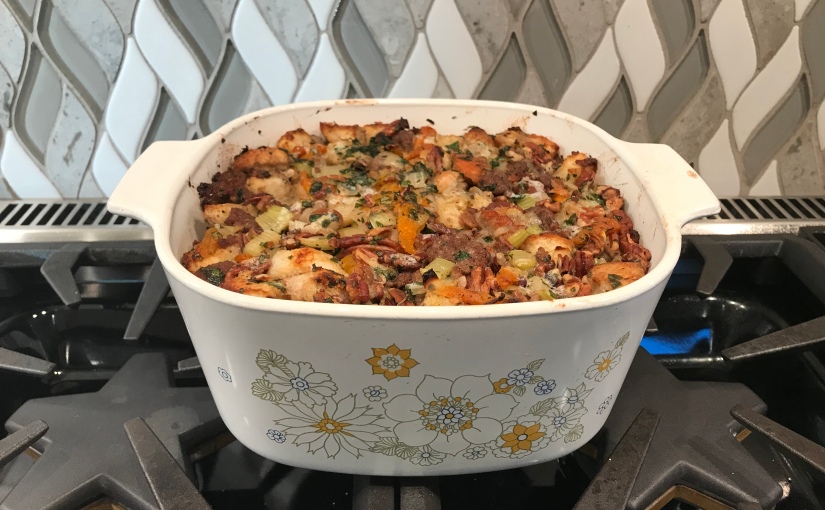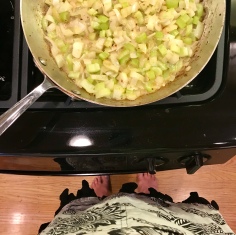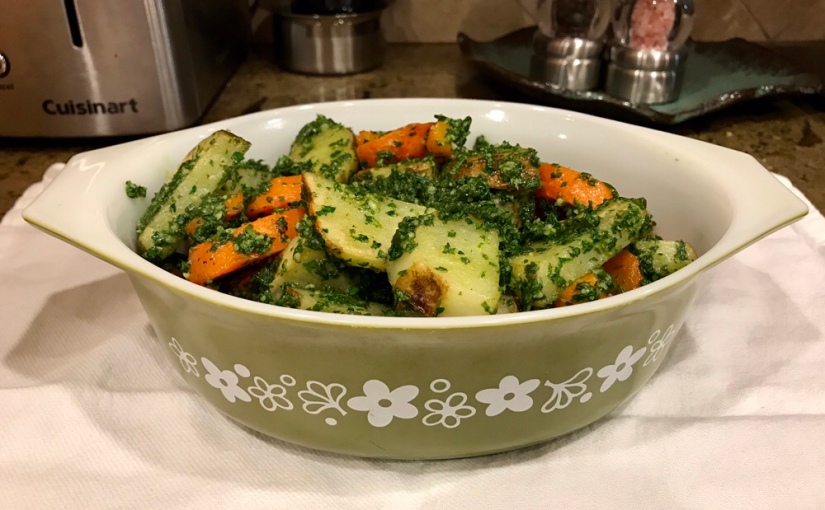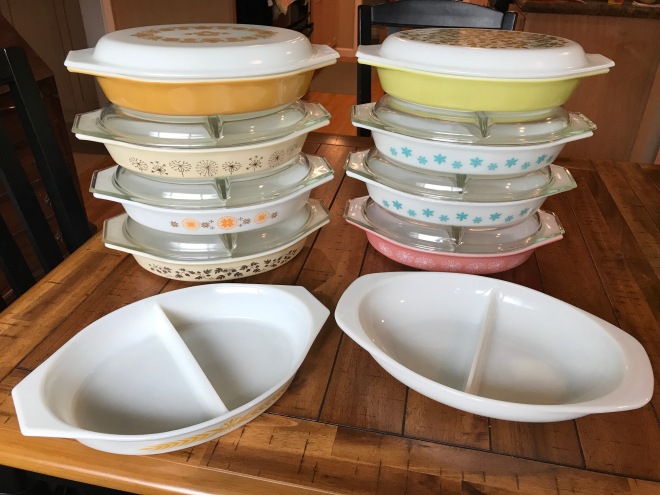My go-to recipe for stuffing comes from Cooks Illustrated — it takes some time, but it’s straight-forward and delicious. My only complaint is that the original version makes too much stuffing, especially if you’re not planning to stuff the turkey. And let’s face it: Cooking the stuffing on the side just gives you more exciting options for the turkey itself (e.g., spatchcocking, deep frying, etc.).
So here, I’ve scaled the recipe back a bit to make it more manageable, and modified it for baking in a casserole dish. It’s suitable for a 13×9 baking pan or 3-quart casserole.
Adapted from Cooks Illustrated’s Bread Stuffing with Sausage, Pecans and Dried Apricots (The New Best Recipe, America’s Test Kitchen 2004).
Ingredients
1 loaf french bread (1 pound)
1 1/2 cup chopped pecans
1 lb sweet Italian sausage
4 tbsp unsalted butter
1 small onion, chopped
3 celery ribs, chopped
heaping 1/4 tsp each dried sage, thyme and marjoram
1/4 tsp ground black pepper
heaping 1/4 cup fresh parsley, finely chopped
2/3 cup dried apricots, sliced in thin strips (about 1/4 lb)
1/2 tsp salt
1 cup low-sodium chicken broth
2 large eggs
Preheat oven to 225 degrees. Divide the bread into thirds; save 1/3 for another use, and cut the rest into 1/2-inch slices. Arrange the slices in a single layer on a sheet pan and bake for 30-40 minutes. The bread should end up dried but not browned. Once it has cooled slightly, cut the bread into 1/2-inch cubes and set aside.
Turn the oven up to 350 degrees. Spread the pecans out on the sheet pan and toast in the oven until fragrant, about 6-8 minutes. Set aside.
Preheat the oven to 400 degrees.
In a large skillet over medium heat, cook the sausage (casings removed, if there are any), breaking it up into bite-size pieces, until browned and no pink remains. Transfer to a large bowl and set aside.
Remove excess grease from the pan, then add the butter. Saute the onions and celery until soft and translucent, about 6-8 minutes. Add the sage, thyme, marjoram and pepper and cook 1 minute more. Transfer to the bowl with the sausage and stir.
Stir the parsley, apricots, pecans and salt into the sausage mixture, then top with the bread cubes. In a separate bowl or measuring cup, whisk together the broth and eggs, then pour over the bread cubes.
Fold the bread cubes into the sausage mixture until thoroughly mixed. Spread the stuffing out into a buttered baking dish, tamping it down gently with a spoon or spatula to fill the dish evenly. (At this point you can cover and refrigerate overnight if desired. Let it sit out at room temperature for about 30 minutes before baking.)
Dot the surface of the stuffing with small bits of butter. Cover with a piece of buttered aluminum foil and bake until hot throughout, about 25-30 minutes. Remove the foil and bake about 15 minutes more, until the top is golden brown.
Pictured: Corning Ware Floral Bouquet Third Edition A-3-B Casserole, Pyrex Town and Country 444 Cinderella Mixing Bowl, Pyrex Town and Country 443 Cinderella Mixing Bowl, Pyrex Spring Blossom 2 403 Round Mixing Bowl, Pyrex Measuring Cup, Glasbake French Casserole






































